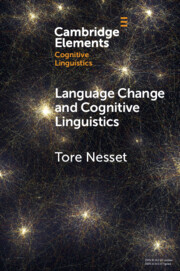Element contents
Language Change and Cognitive Linguistics
Published online by Cambridge University Press: 03 November 2022
Summary
- Type
- Element
- Information
- Online ISBN: 9781009031554Publisher: Cambridge University PressPrint publication: 01 December 2022

